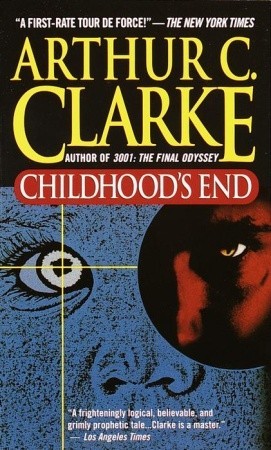 Crispin: At the Edge of the World is the second book in Avi's trilogy about his young character, Crispin, and follows directly after the events in Crispin: The Cross of Lead. The first two books in the trilogy (I have not yet read the third) are very engaging, entertaining, and thought-provoking pieces of historical fiction. They are more realistic than many young adult books, and Avi takes care to ensure Crispin is a product of the time the story takes place, and not a person with unrealistically modern ideals. There are themes of religion, tolerance, politics, and coming-of-age, among others, all richly probed without bogging down the plot. If you have not had a chance to read The Cross of Lead, you should do so, and if you have, do not hesitate to read the sequel.
Crispin: At the Edge of the World is the second book in Avi's trilogy about his young character, Crispin, and follows directly after the events in Crispin: The Cross of Lead. The first two books in the trilogy (I have not yet read the third) are very engaging, entertaining, and thought-provoking pieces of historical fiction. They are more realistic than many young adult books, and Avi takes care to ensure Crispin is a product of the time the story takes place, and not a person with unrealistically modern ideals. There are themes of religion, tolerance, politics, and coming-of-age, among others, all richly probed without bogging down the plot. If you have not had a chance to read The Cross of Lead, you should do so, and if you have, do not hesitate to read the sequel.Spoilers below for those who have not read The Cross of Lead.
Even after successfully escaping the hold of John Aycliffe, Crispin and his friend-protector, Bear, are still not in the clear. The two run into trouble when John Ball's Brotherhood, of which Bear was a part, believes Bear betrayed them and they attack, wounding him with an arrow. Crispin and Bear escape and hide, worried the Brotherhood will continue to hunt them down. The arrow wound weakens Bear immensely, but he and Crispin are fortunate to find a medicine woman named Aude with a young girl named Troth.
Crispin, whose isolated Christian upbringing has left him ignorant of other worldviews, distrusts Aude and Troth. Aude, he believes, is a witch, since she worships a God different from Crispin's, and Troth has a cleft lip, which Crispin believes may be the mark of the Devil. However, with Bear delirious from his wound, he realizes they are their only chance of survival. In the time he spends with them, he also begins to grow closer with the young girl, and Troth, in turn, ceases to keep her cleft lip covered, a sign of trust.
Crispin, I mention, is ignorant, with a small worldview, but I don't want readers to think that this is a criticism of his Christian upbringing. Avi offers no criticism to religious views, and in fact Crispin's ignorance is not a criticism at all, but an observation. Access to world news and events is at our fingertips now, with smartphones and social media, but in Crispin's 14th century world, isolation is easy and news hard to come by. Living in an isolated community requires certain prejudices to be developed for a sense of security, and for Crispin to come across a pagan woman is a breach of these secure prejudices. Bear, however, serves as a teacher figure, one who teaches tolerance and empathy, and Crispin is an eager learner. He wants to be a good person, and sometimes being a good person means challenging your own views.
Just like in The Cross of Lead, there is plenty of adventure and some surprising violence (this book has some surprisingly gory violence towards the end). A lot of the conflict revolves around the fact that Bear is aging and his wound keeps him from full strength, meaning Crispin is constantly struggling with the realization he needs to step up in his duties. That said, I like the fact that, unlike other YA fiction, Crispin is not the one who solves all of the problems and he does not always have the best solution. He learns from Bear, and he also attempts to distinguish between when he should heed Bear's commands or disobey them. With its well-developed, engaging characters and plot, and an ending that will be sure to tug at heart-strings, I highly recommend At the Edge of the World. And if you haven't read The Cross of Lead, start there. You won't be disappointed.

















